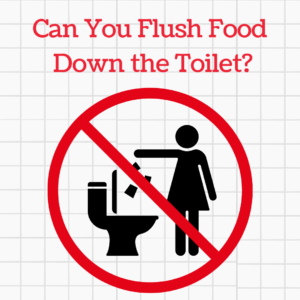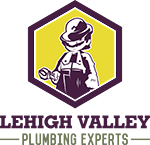You are preparing your renowned Thanksgiving meal when steamed spinach, by some miracle, finds its way onto the menu. You can always slip into the restroom and pour that green muck down the drain, so there is no need to worry. It ought to be okay if it is soft and little enough, right? Most often, individuals flush food down the toilet because they are attempting to use it as a replacement for trash disposal or because a youngster secretly flushes some cereal down the toilet without their parent’s knowledge. The following list includes some foods that should never be flushed and disposal techniques for individuals who want something other than the trash can.
What takes place when you flush food.
Please don’t worry if you are fretting about that one time a piece of bread accidentally went into the toilet. As long as the portion is not too large, a tiny amount of food here and there will not harm anything. When food flushing develops into a habit, the biggest issues appear. The worst-case situation is that the food waste will eventually clog your sewer line and cause a sewage backup into your house.
Which foods should not be flushed?
All Foods, to put it simply.
When it comes to your plumbing, every meal should be regarded as off-limits. Simply put, your pipes are too small to dispose of food leftovers efficiently. Sometimes people are surprised by this. After all, is it not human excrement, just food that has been digested? Food is biodegradable, but undigested food may produce blockages that might seriously damage your plumbing. Additionally, certain foods might be especially dangerous when flushed.
Here are the foods that shouldn’t be flushed down the toilet or you will find yourself in need of a plumber sooner than later to unclog a drain:
Oils and fats. These chemicals are troublesome because they transition from a liquid to a solid form when they cool. They may impede or even block sewage flow if they coagulate within your sewer. Oils and fats may damage more than just your sewage system. They can cling onto pipe detritus, forming matted clumps that may damage bigger municipalities’ sewage systems.
Hard food scraps.
When flushed, hard food scraps like apple cores, corn cobs, and animal bones that do not break down right away may also cause issues. They may impede your drain by stopping the passage of waste down it. Put these things in the trash can to be safe.
Grains. Because they expand when exposed to water, grains like rice and oats may fill the space in your pipes when flushed. And you don’t want that. So never dump grains down the toilet to prevent clogs.
Starchy foods. Because mashed potatoes have a thick consistency preventing effective flushing, starchy foods like those should never be flushed down the toilet. Any leftover potatoes should go to the trash can.
How to get rid of smelly food.
You do not want to toss any leftover fish stew in the trash bin, where it will stench your kitchen. There are choices available to you! Try these practical alternatives to dumping your food down the toilet instead:
- Garbage disposal. If you don’t have trash disposal yet, contact your local plumber to have one installed.
- The freezer trick. If you are concerned about the scent, box up your leftovers and store them in the freezer until garbage day.
- Composting organic material. It is quick and simple! Any food may be composted and your garden will appreciate it.
Flushing options.
Instead of flushing the food down the toilet and running the danger of a clogged drain, use appropriate waste disposal techniques instead. Store stinky food scraps in a bag in the freezer until bin day, when you can drop it on the curb—store leftovers in the refrigerator or freezer. Put cooking fats in an old plastic container or jar and throw them in the trash. 



Leave A Comment